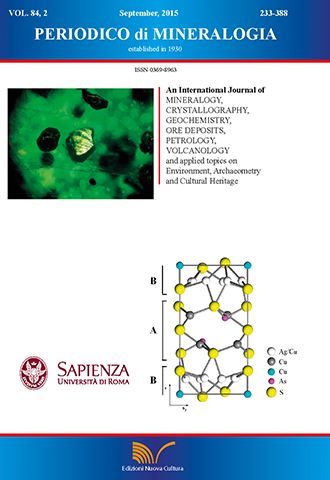Minero-petrographic and isotopic characterization of two antique marble quarries in the Deni̇zli̇ region (western Anatolia, Turkey)
DOI:
https://doi.org/10.2451/2015PM0013Keywords:
Hierapolis, Domuzderesi, Denizli, Antique marble quarry, C-O stable isotopesAbstract
Abstract
The marbles are widely used rock types in the structures of today and ancient world. In this study, two ancient marble quarries named as Hierapolis and Domuzderesi in Denizli region, have been examined. The marble samples from these quarries can be grouped into three types, based on color, crystal size, crystal boundaries and foliation status. These groups are identified as white, gray veined and gray marbles. In terms of microscopic features, heteroblastic polygonal (white marbles in Hierapolis, gray veined and gray marbles in Domuzderesi) and homeoblastic polygonal textures (white marbles in Domuzderesi) have been defined. The mineral compositions of all marble groups are quite similar. They are consisting predominantly of carbonate minerals (calcite, dolomite) and, as accessory minerals quartz, muscovite, pyroxene and ferric ıron oxides. These results are also supported by the XRD studies. According to the geochemical analyses, protoliths of Hierapolis and Domuzderesi marbles are limestone. In Hiearapolis marble quarry, the δ13C and δ18O values change between 0.63 - 3.52 ‰ and (-9.55) - (-1.21) ‰, in turn. The δ13C and δ18O values of Domuzderesi marble quarry range from (-1.44) ‰ and 3.41 ‰, -13.26 ‰ and (-5.3) ‰, respectively. Minero-petrographic, geochemical and C-O stable isotope results reveal that Hierapolis and Domuzderesi ancient quarries have similar characteristics which have orginated from a same protolith.


